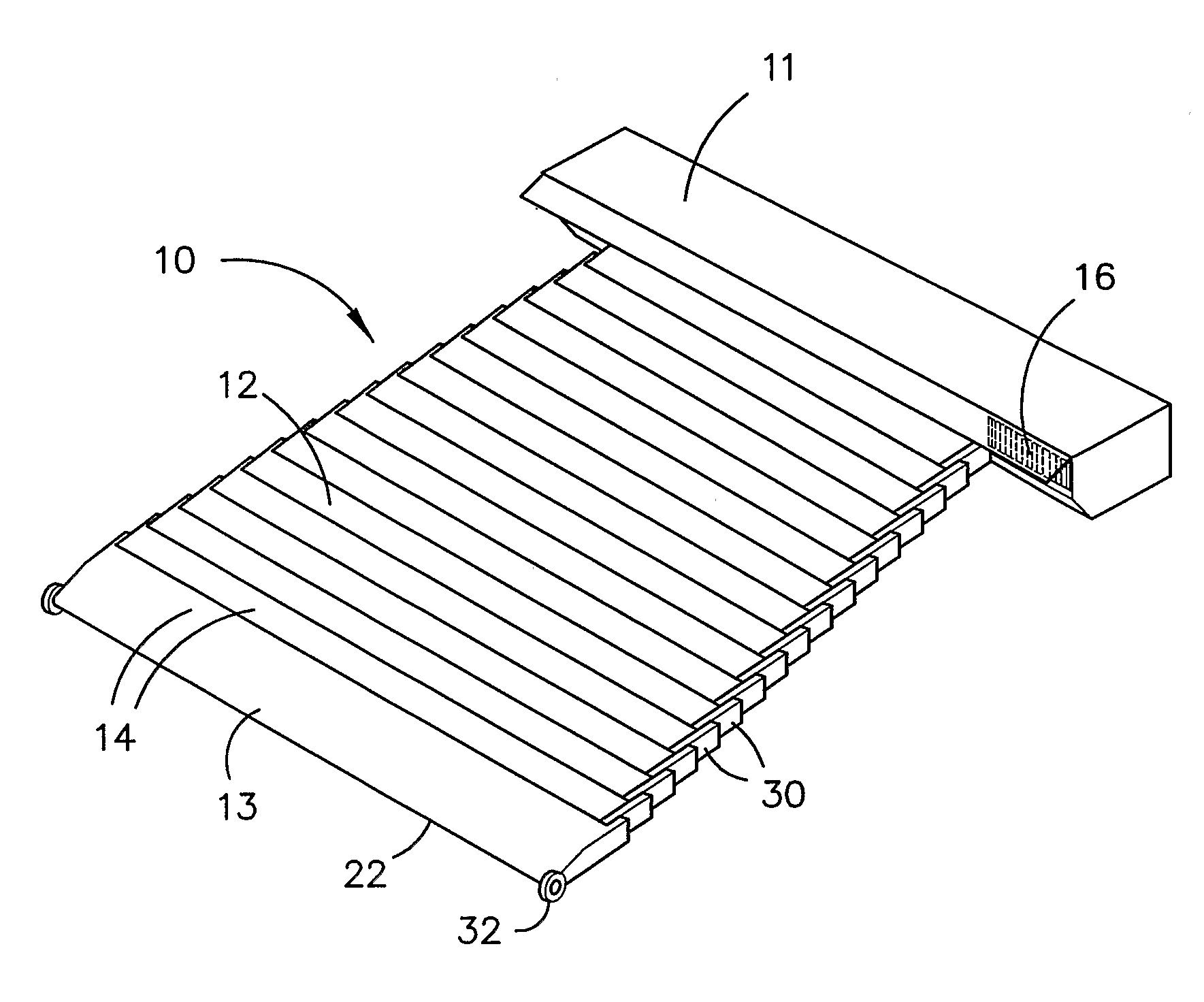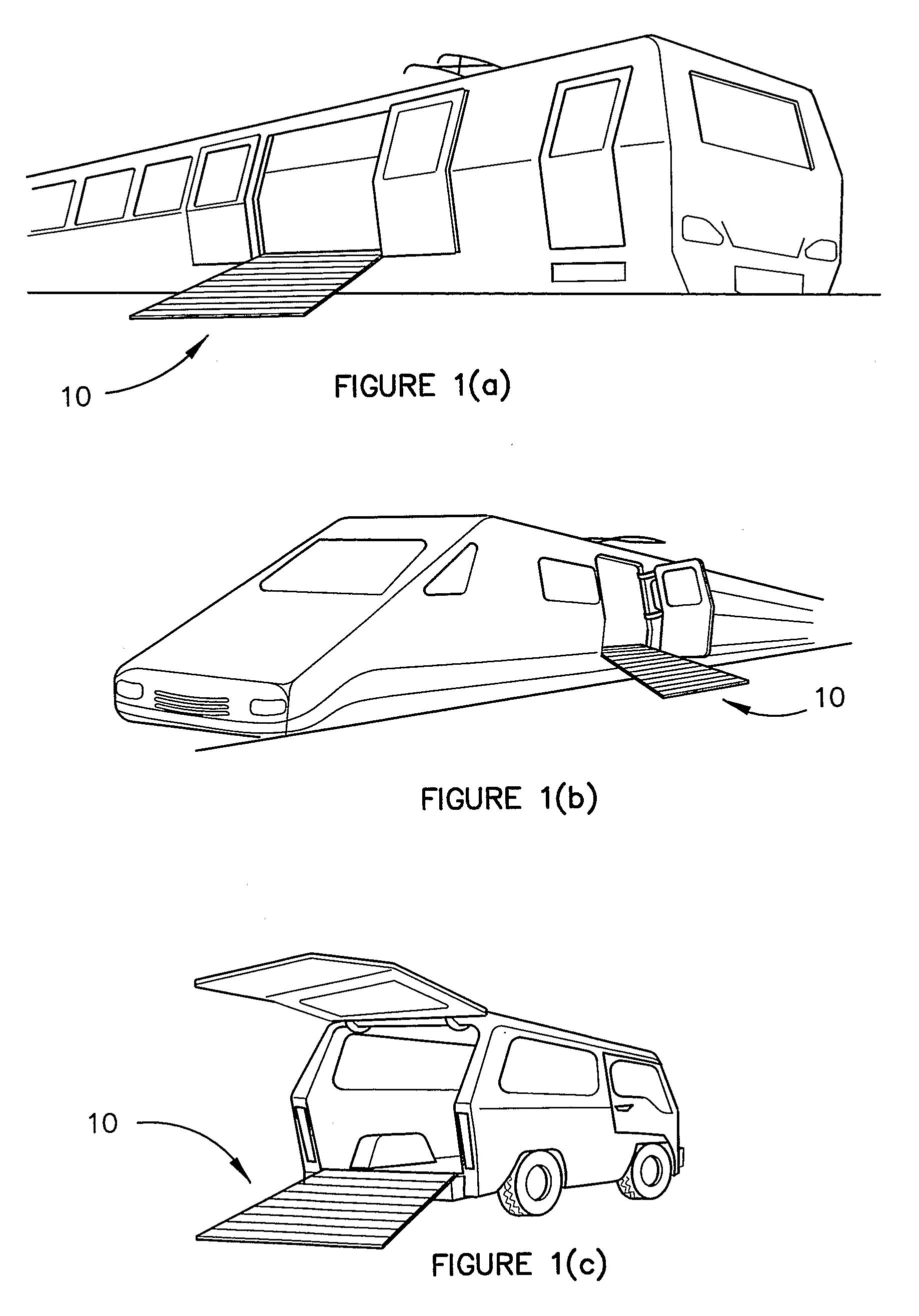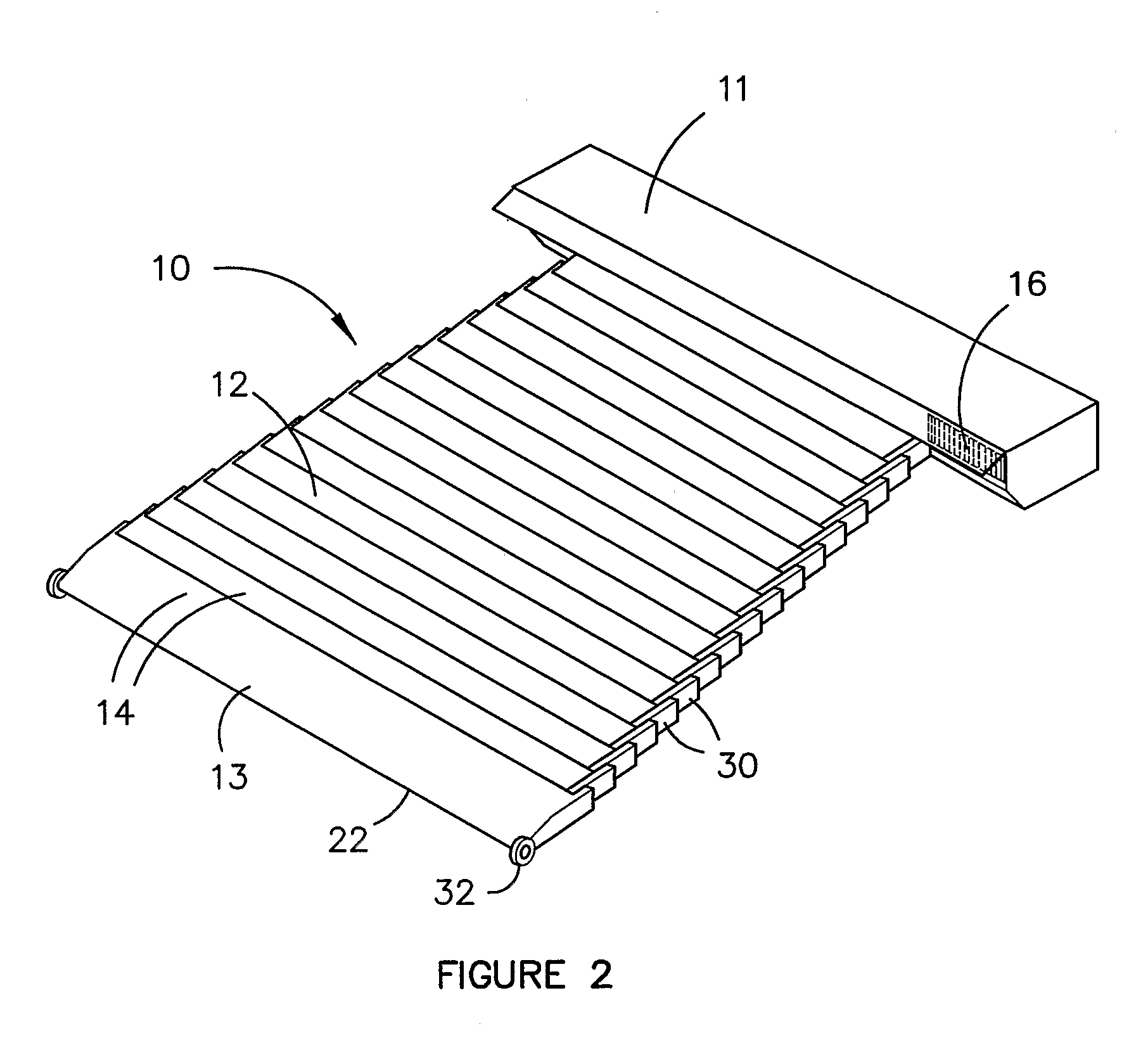Bridging Device
- Summary
- Abstract
- Description
- Claims
- Application Information
AI Technical Summary
Benefits of technology
Problems solved by technology
Method used
Image
Examples
Embodiment Construction
[0043]The Figures illustrate a bridging device 10 that in its preferred use is adapted to be mounted at or under a door opening of a vehicle. Such a vehicle could be a train, tram, bus, taxi, water vehicles such as ferries, or private road vehicles.
[0044]The bridging device 10 comprises a housing 11 from which, as illustrated in FIG. 2, a bridging surface, or ramp 12, telescopically extends. The ramp 12 is designed to bridge a gap between two points and specifically between the point at which the housing 11 is mounted and a point at the opposite side of the gap. Furthermore, the gap may be between: two spaced surfaces at the same level or surfaces of uneven height. A leading edge 13 of the ramp may be supported on the opposite surface or may remain unsupported, extending in a cantilevered fashion from the housing.
[0045]The ramp 12 comprises a stack of interjoined beams 14 that slide out of the housing one over the other to telescopically extend from the retracted position, as illust...
PUM
 Login to View More
Login to View More Abstract
Description
Claims
Application Information
 Login to View More
Login to View More - R&D
- Intellectual Property
- Life Sciences
- Materials
- Tech Scout
- Unparalleled Data Quality
- Higher Quality Content
- 60% Fewer Hallucinations
Browse by: Latest US Patents, China's latest patents, Technical Efficacy Thesaurus, Application Domain, Technology Topic, Popular Technical Reports.
© 2025 PatSnap. All rights reserved.Legal|Privacy policy|Modern Slavery Act Transparency Statement|Sitemap|About US| Contact US: help@patsnap.com



